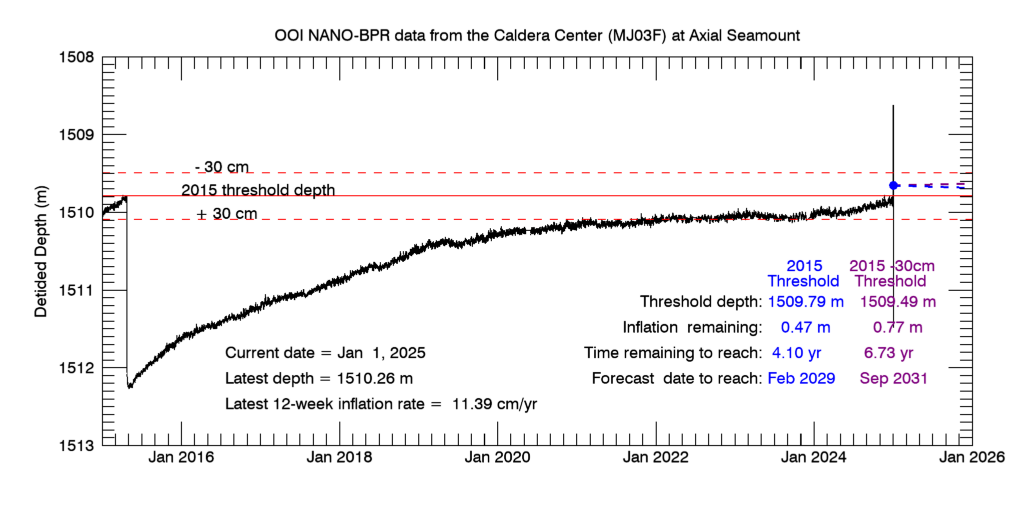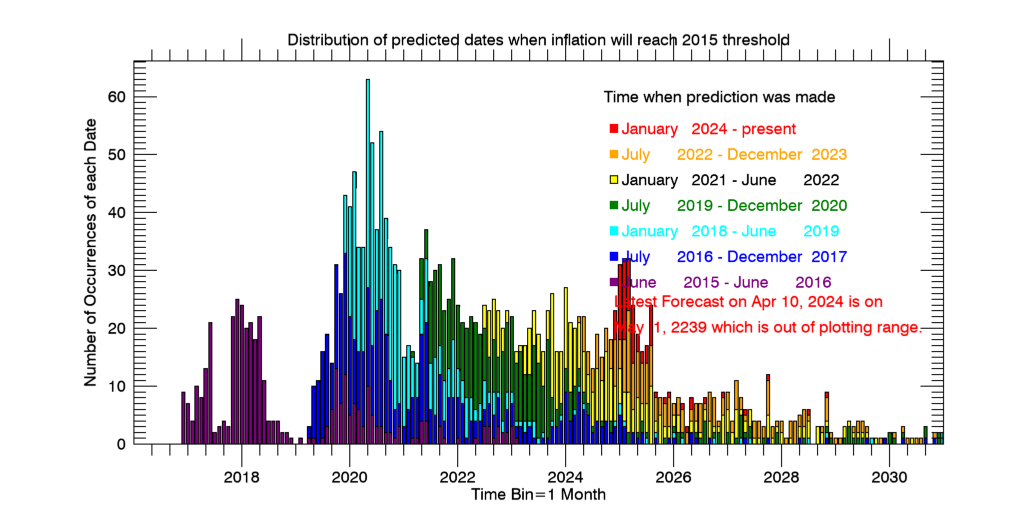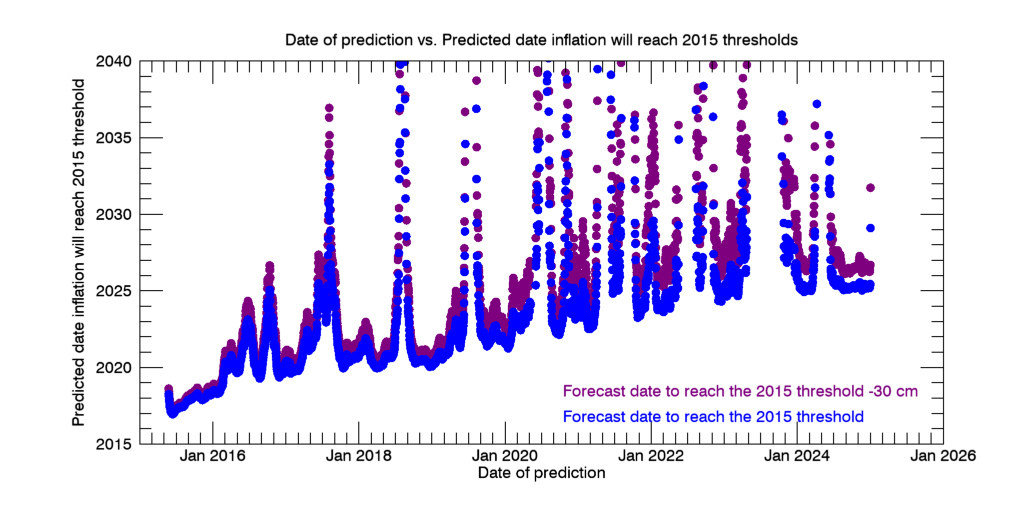Inflation Threshold Forecasts - Method #1
The plots below use the average inflation rate calculated from the last 12 weeks of de-tided depths from instrument MJ03F to the calculate the time when Axial Seamount will reach: (1) the level of inflation when the 2015 eruption started, and (2) a level of inflation 30 cm higher than in 2015 (which is somewhat arbitrary, but is included because the level of inflation in 2015 was 30 cm higher than the level reached before the 2011 eruption). These plots are updated once a day using the latest data from the OOI Cabled Array.
Note: this Forecasting - Method #1 is relatively "noisy" because the de-tided BPR depths include tidal residuals and oceanographic effects in addition to the geophysical signals we are interested in. (See the Forecasting - Method #2 and Forecasting - Method #3 pages for other methods that are probably better). In any case, the 12-week rate of inflation is quite variable and so the forecast dates will also be quite variable. The histogram plot below shows the dates where most of the forecasts have fallen. When the 12-week inflation rate gets very low, forecasts are suspended until the rate returns to higher levels. Of course, we do not know at exactly what level of inflation the next eruption at Axial will be triggered, but our best guess is that it will be within a year after the 2015 inflation threshold is reached. We will likely make a more specific forecast when we get closer to that threshold on our Axial Seamount Eruption Forecast Blog. Programming by Andy Lau, Oregon State University.
LINK BACK TO MAIN PAGE
Plot of OOI BPR data from the Caldera Center (BOTPT-A301-MJ03F; black curve) showing deflation during the 2015 eruption (left) followed by re-inflation. If the rate is positive, a blue dashed line extrapolates into the future using the average rate of inflation from the last 12 weeks; middle blue dot is date when 2015 inflation threshold is reached, right purple dot is when a threshold 30 cm higher will be reached. Specifics are included in the legend on the plot. Click for a larger version this plot.
Histogram of predicted dates when Axial Seamount will reach the 2015 threshold, color coded by when the predicted date was calculated. Predicted dates were calculated based on the average rate of reinflation from the previous 12-weeks, beginning in June 2015. Note right after the 2015 eruption (purple) when the inflation rate was highest, the predicted dates were earliest. In contrast, the orange bars on the right side of the histogram were all predicted during the latter half of 2017 when the inflation rates were particularly low. Many latest predictions (red) are in the 2020-2022 neighborhood. Predicted dates are binned in months. Click for a larger version this plot.
Plot of Predicted date that inflation will reach the 2015 inflation threshold (Y-axis) vs. Date on which the prediction was made (X-axis), using the average rate of inflation from the previous 12 weeks, starting in June 2015. Blue dots are date to reach the 2015 inflation threshold; purple dots are for a threshold 30 cm higher (as in the first plot above). Note predicted dates were earliest when the rate of re-inflation was highest, soon after the 2015 eruption (left side of plot). Peaks in the curves show time periods when the average rate of inflation slowed significantly (especially in mid-2017 and mid-2018), which pushed the predicted dates farther into the future. Click for a larger version this plot.
More information
National Science Foundation | The Ocean Observatories Initiative | Cabled Array Observatory
Required OOI disclaimer: This is provided as pre-commissioned data intended for scientific use, and is subject to the OOI Data Policy. This data has not been through Quality Assurance checks.
Required NSF disclaimer: This material is based upon work supported by the National Science Foundation. Any opinions, findings, and conclusions or recommendations expressed in this material are those of the author(s) and do not necessarily reflect the views of the National Science Foundation.



